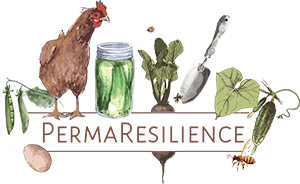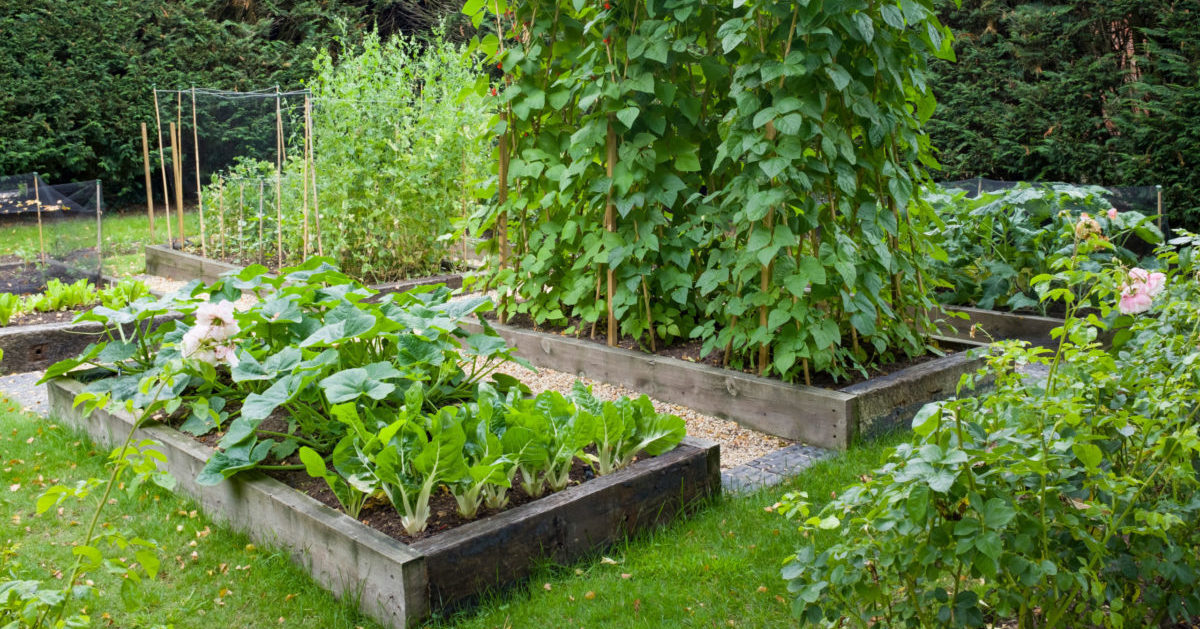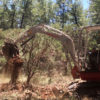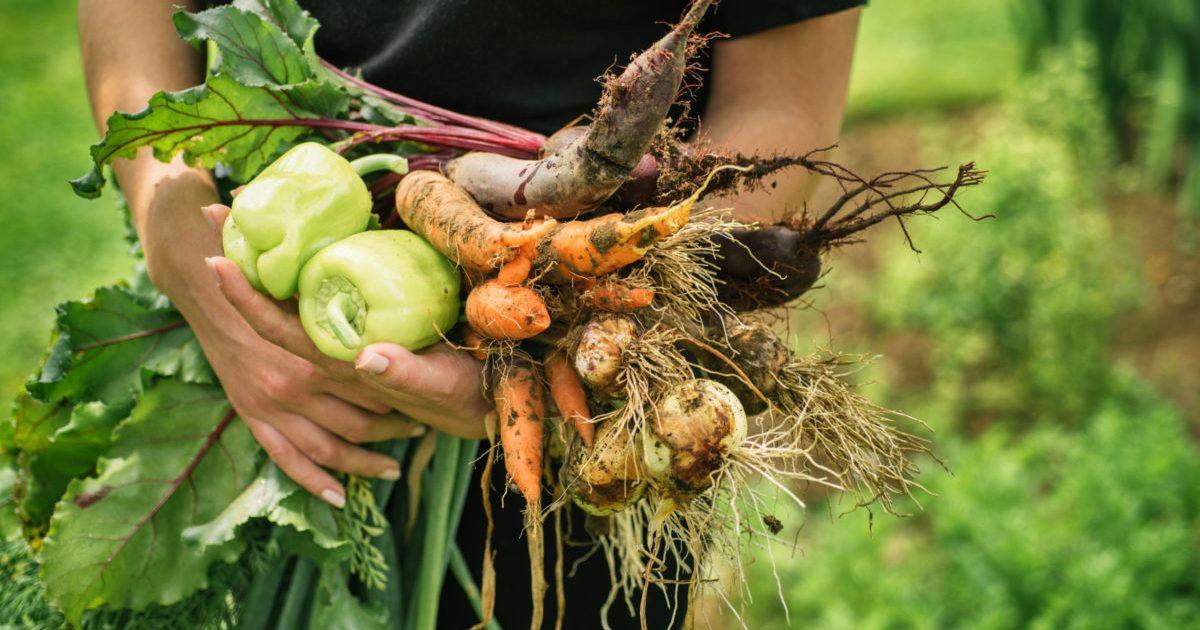How to create a permaculture garden for abundant harvests, minimal effort, and sustainable self-sufficient goals. Learn the foundations for strong plants, sheet mulching, and even strategies for cold-climate garden growing.
But what exactly does a permaculture Garden or an ecological Garden look like and how do we create one?
Well, permaculture Gardens are living ecosystems designed using Nature’s roles in boasting the lushness and resilience of the natural environment. Now, the good design of these Gardens needs only frequent watering, the soil renews and enlivens itself rather than demanding heavy fertilization. And we intentionally choose tools and strategies that are less working and more sustainable and allow nature to do some of the heavy lifting for us.
It can sometimes be hard to distinguish a permaculture Garden from a regular Garden as even traditional Gardens can incorporate permaculture tools and strategies. Often they seem a little more like wild Gardens where plants are even growing vertically maximizing yields.
We seek to cover bare soil to ensure soil health and water retention, and we seek to include beneficial and multi-function plants to maximize production while reducing unnecessary work. And of course, the permaculture Garden has invisible connections to all other aspects of the landscape, including connections to the kitchen, home, and chickens, for example.
You see, in a garden design with ecological principles, birds and other animals feel just as welcome in these living landscapes as the gardener. So then, what are the parts and pieces that make up an ecological Garden?
Well, there are many different ways to create an ecological Garden, but I’ll keep it simple and break it down to a list of tools and strategies that we might use in a typical permaculture Garden.
This would include:
- Building healthy no-till soil
- Boosting soil life via compost teas
- Including annual edible plants and edible perennial plants
- Including herbs and medicinal plants
- Including beneficial insectary plants or plants that attract insects that are needed like these for pollination
- Including nutrient accumulating plants or plants that build soil
- Incorporating polyculture and interplanting techniques
- Incorporating multi-function plants, plants that do it all
- Building with plant guilds, which are groupings of beneficial plants
- Integrating fruit and nut trees
- And much, much more.
Where would you start with a garden? Let’s take a quick look at soil and soil life first because only healthy soil can promote a healthy garden. You see, there’s a difference between dirt and soil. Dirt is dead, and soil is alive. And there can be more creatures in a teaspoon of good quality soil than there are people on the entire planet – more than 7 billion. And it’s the soil creatures that work with the plants and their roots to get them the nutrients they need. So, the very first place to start is to encourage healthy soils, and this is the place where most gardeners fail to address.
You see, if you have healthy soil, you have healthy plants. If you have healthy plants, they resist bugs and pests. You have larger yields, and they thrive. This is a gardener’s dream, right? So, a great place to start to build soil is by adding quality compost and compost teas at home. Both of these two combined feed the soil life and feed the plants.
In addition to adding nutrients, quality compost increases the water-holding capacity of soils, thereby reducing your water use and helping to ensure your plants do not get stressed and die in between waterings in the heat of the summer. But compost doesn’t need to come from big box stores.
We can build quality compost piles at home from kitchen scraps and yard waste. Do you see how we’re creating even more connections here? The kitchen is connected to the garden by helping to create the compost that will help the soil life and the plants, which will, in turn, be food that goes back into the kitchen. We’re closing the loops. We’re creating sustainability here, folks.
However, building healthy soils with compost and compost teas can take a little time, and if you’re in a hurry, there’s a way to create an affordable, weed-free garden bed anywhere without tilling in as little as a couple of hours. It’s a technique called sheet mulching or lasagna gardening. Now, this is one of my favorite hacks, and I use it all over the place. In its simplest form, sheet mulching is a four-step process.
In the starting area that you want to turn into a garden bed, could be entirely compacted in dead soil, or it could be full of weeds; it doesn’t really matter, as the lasagna bed will be built on top of that.
So, first, apply a thick layer of weed-suppressing newspaper or glue-free cardboard, or even old discarded cloth made from natural fibers over the area. This will kill off any unwanted plants or weeds and then compost them in place underneath the garden bed.
Second, on top of that weed-suppressing layer, add about six to eight inches of compost and spread it over the entire area intended to be the garden bed.
Third, over the deep layer of compost, add yet another layer of two to four inches of mulch, this can be wood chips, leaves, dried grass clippings, or even straw. This will protect the compost and retain moisture.
Now, at this point, the lasagna garden is done and ready for planting. To plant, simply move the mulch aside in the area where you desire to plant and stick the plant in the ground. Do you see how quick, affordable, and easy it was to build a garden bed without tilling and see how this garden will not have any issues with weeds and will have quality soil? Voila, instant garden!
All right, so what do you do next with your instant garden bed and a healthy living soil in place? What might you want to plant in it? Well, to begin with, you can grab one of our permaculture.
Tools from the toolbox, such as polyculture or interplanting, are often not used by conventional or traditional gardeners who plant all the same plants in a row. However, by intermixing plantings, we can increase yields in the same amount of space and reduce pest issues. For example, we can interplant a garden bed with a combination of vegetables such as lettuce, onion, and carrots together.
This way, they will not compete with each other for nutrients or sunlight. By mimicking nature, we get so much more out of a single garden bed.
If we want to take this polyculture approach one step further, we can create what’s called a plant guild. A plant guild is simply a plant community or grouping of plants that will all help each other in some way. Guilds are one way to bridge the gap between a conventional vegetable garden and a wildlife garden by creating communities that act and feel like natural landscapes, but include humans in their webwork.
They also mimic the way nature designs ecosystems where plants are not ordered and separated but instead intermixed so that plants can receive different benefits from each other, such as nutrients from a legume that pulls nitrogen from the atmosphere and puts it into the soil for other plants to access.
In a fruit tree guild, for example, each plant performs a function such as building soil, accumulating nutrients, adding organic matter, attracting beneficial insects and pollinators, repelling pests, and providing food or other resources for humans.
By creating plant guilds around fruit trees, we start to create what is called a food forest. This extends food production vertically up into the air and into space, not just horizontally on the ground.
Permaculture gardening and ecological gardening look to science and observations in nature to understand what everything does, such as clover, which brings nitrogen into the soil. We use some of that information to help us design the best gardens and homesteads possible. This is just the tip of the iceberg, but a major concern people often have is whether this will work in their climate.
To address this concern, permaculture is a methodology full of tools that work in any climate. Whether you live in a tropical climate such as Hawaii, a cold climate like Canada, or a desert climate like New Mexico, permaculture works anywhere. However, not every tool or strategy works in every climate.
For example, in a wet tropical climate, you do not need to worry so much about rainwater harvesting for your garden. Figuring out what works in your climate, it’s actually pretty easy. You just need to determine if you’re in a tropical, temperate, or arid climate and pick the appropriate tools to match. Most people can even guess which climate they’re in or if they’re in a combination of climates.
So with that established, and since we know that growing food is the gateway to sustainable living, let’s move on to the second half, which is: can I grow food in my climate? And I think the question is a bit misleading because the vast majority of people, can grow food and garden. The question just becomes: what can I grow and for how long?
Now, the typical standard answer is to look to the USDA hardiness zone system, which is just a climate classification map that tells you how cold your area gets and therefore what you can grow.
Yes, there are climates that are more challenging to grow in than others, but here’s the thing: permaculture has solutions and techniques that allow people in challenging climates to grow much more than they would otherwise expect or be able to.
For example, you can use season-extending strategies such as easy-to-build cold frames that can extend your growing season in the garden for months. Or you can build passive solar greenhouses that heat and cool themselves with no energy and grow fruit trees year-round, even in the northern cold climates and in mountain climates.
Or you can create shaded food forests to provide cooling in hot and dry climates, further extending the growing season into the warmer summer months when typically nothing would grow. And those are just a couple of examples of tools and strategies permaculture provides for food production.
Let’s not forget that permaculture extends beyond the garden and into animal systems, home retrofitting and designing, and even restoring environments. So really, the climate is almost a little concern.
What I hope you have gotten from this section here is how different and easy permaculture gardens can be and how permaculture and growing food can be done in almost any climate, especially when using season-extending strategies.








